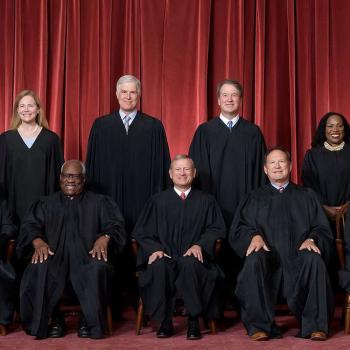Part of the problem with the way the humanities are often taught today and part of the problem of postmodernist academia in general is that human beings and works of art are reduced from their complexity into ciphers of gender, sex, class, and race. Instead of reading an author for what can be learned or appreciating the artistry of the work, he or she is “interrogated”–some scholars actually use that term, a metaphor from the totalitarian police state–for his or her ideological transgressions.
The estimable Anthony Esolen has a piece in the Intercollegiate Review that challenges this reductionism. He does so with the help of Marilynne Robinson’s Christian novel Gilead.
From Anthony Esolen, The Subhumanities: The Reductive Violence of Race, Class, and Gender Theory | Intercollegiate Review:
Whenever we meet a human being, then, we meet that extraordinary creature who can think of time past and time to come, and times that never were. We meet one whose next thought rarely has to do with food or the act of sex but with shaking a bough of wet leaves to see the drops spatter and splash, or with a jest to cap the jest of a friend as they sit on a shady porch, or with one who walks down to the quiet graveyard to place a vase of flowers at her mother’s headstone, to stand awhile there, and say a prayer, and think of her while the cardinals whistle their love calls from the trees.
If we are to know that human being, we should not begin with race or class or “gender,” that category invented by social critics who avert their eyes, prim and prying at once, from the frank and plain reality of sex. We certainly cannot end there. If I say, “Who is John?” you cannot answer me correctly by saying that he is six feet tall, 150 pounds, with Italian and Irish ancestry on his mother’s side and African American and Latino ancestry on his father’s side, with a family income of such and such a year, voting in such a pattern, living on Maple Street and selling insurance. These are all things about John, but they are not John, the man. It does violence to the man to reduce him to such categories. It is an act of contempt for his humanity. It reduces him, not so that we may get to know him, but so that we can manipulate facts about him while not getting to know him at all. It is a study in subhumanity.That is exactly what schoolteachers, professors, and critics do to John’s art when they cram it into the pigeonholes of race, class, and gender. It is an act of violence.
The rest of the piece is lyrical, eloquent, devastating, inspiring, and impossible for me to summarize or excerpt, so read the whole thing here.
HT: Anthony Sacramone











